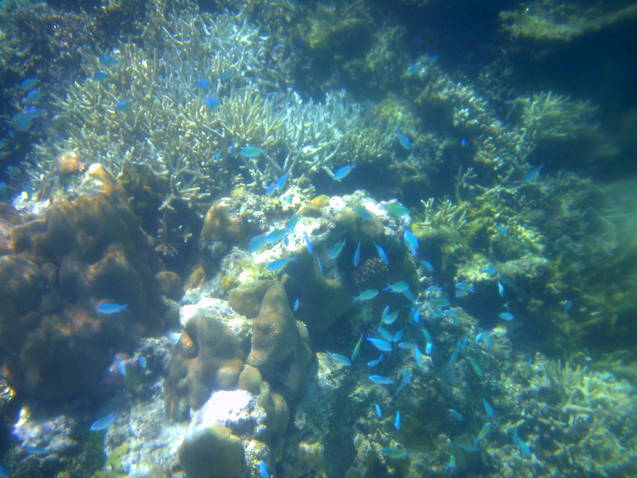Saturday morning.
About a hundred men and women are gathered in a chapel to receive
instruction that will help them better serve their own congregations. To set the stage for the instruction, a
young teenaged girl named Salote (Sah-loh-teh)is presented to the audience, to
sing a solo. Salote bears the
disfigurement of a childhood accident, and has vision in only one eye. She is obviously frightened by the
prospect of performing in front of so many adults, most of whom she has never
met. She stands at the microphone,
trying to collect herself, and the recorded accompaniment begins.
She fights back tears.
Wiping her face, she is able to get out only a few words before her
voice chokes, and she purses her lips, making them white with the effort to
control her emotions. Taking a
deep breath, she sings another phrase, only to choke again on her fear, while
more tears flow. The recorded
accompaniment continues without her.
We all watch, sympathetic to her fear. But one woman takes action. Moapa (Mah-oh-pah), one of the leaders
for teenaged girls in our area, rises and walks over to Salote. She hands Salote a tissue, with which Salote
wipes her tears. Standing behind
the girl, Maopa wraps her arms around Salote’s waist, hugging the 13-year old
to her. As she does this, she seems to send strength into Salote, who sings
with a voice growing in surety as she continues. Our focus is drawn back to Salote, and we are engaged in her
performance.
As she sings about her faith in the Savior, the words Salote
sings turn the moment from sweet to profound: “He knows I can do hard things….I
know He is standing with me…” Those of us privileged to be present are
witnesses to a defining moment as precious as any emerald. Tears flow down many cheeks in the
chapel, and our understanding is enlarged. The words of Salote’s message sink deeply into our hearts. As she finishes her song, Salote turns
around and she and Maopa embrace.
The audience takes a collective breath, savoring this treasure of an
experience.
But that’s not the end of the story. That afternoon, I visited with Maopa,
and she told me.
Some months previous, Maopa had heard this young girl
perform for a very familiar, small audience. Salote, it turns out, has endured a great deal of teasing
about her appearance during her short life, and her self-esteem has suffered
greatly. She began singing, and
the sweet quality of her voice has helped her find at least one area in her
life in which she can be accepted.
Having had some voice training herself, Maopa offered to
give the child singing lessons.
They only had a few lessons together. Trying to demonstrate how to breathe properly, Maopa invited
Salote to come feel her abdomen while she inhaled. The two of them worked together, first Salote with her hands
on Maopa’s generous belly, then Maopa with her hands on Salote’s slender
waist. As they worked together on
the physical requirements of singing, Maopa spoke to Salote of the mental and
emotional elements, urging her to concentrate on communicating her message when
she sang, and using her breathing to stay calm. The physical connection they created became an emotional
one, with the older, more experienced singer creating strength in the younger
novice.
Salote proved herself an excellent student, sharing and
improving her talent in performance.
But this time, something was different. Perhaps Salote could see the large collection of people in
her audience this time. She had
performed for larger audiences, but they were farther away from her than in this
chapel. Perhaps Salote had not
performed in a while, or perhaps she was just experiencing the self-doubt that
plagues most 13-year olds.
Whatever it was, the combination of Salote’s youth,
nervousness and determined persistence, combined with Maopa’s loving, silent support, provided a cherished
moment in Christlike behavior. “He
knows I can do hard things…I know He is standing with me.” Well, Jesus Christ wasn’t there in
person, but his servant was, and it was an honor to share that emerald
moment.















